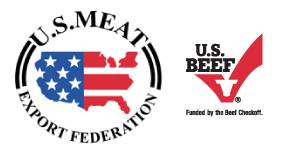The US Industry
The US Industry
The U.S. beef industry is known for the tender, flavorful, grain-fed beef that it produces.
Cattle producers take pride in producing safe and nutritious beef and beef products for consumers in the U.S. and around the world. A consumer-driven and responsive industry, the U.S. beef industry continues to increase production efficiency, producing beef with high quality attributes and satisfying consumers domestically and internationally.
Blessed with an abundance of natural resources, the United States has vast expanses of open space for cattle grazing and rich farmland for producing the feed grains that are vital ingredients in specialty formulated feed rations for U.S. cattle. Beef produced in the United States is known for its taste and tenderness world-wide. These quality attributes are the direct result of the industry’s production practices and its commitment to customer satisfaction.
There are nearly 900 federally inspected slaughter plants in the United States for cattle.
These plants harvest approximately 34 million cattle each year. Virtually all U.S. beef is sold as boxed beef, with the U.S. packers and purveyors cutting the carcass into either subprimal or retail cuts. The size and structure of the U.S. industry, in combination with the most advanced manufacturing technology in the world and food safety controls, make it possible for buyers around the world to purchase specific cuts of high-quality beef in large and small quantities at very competitive prices.
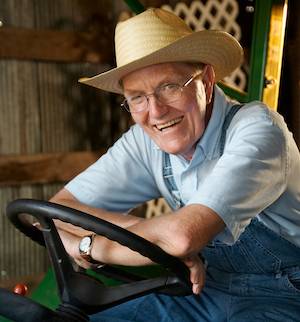
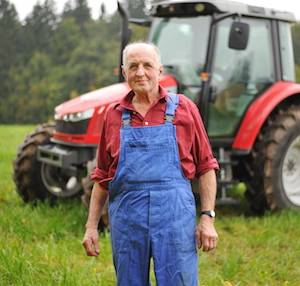
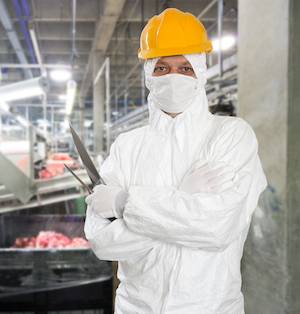

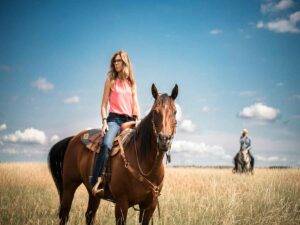
The Stages of Beef Production
Beef production begins with a cow-calf producer who maintains a breeding herd of cows that raise calves every year. When a calf is born, it weighs 60-100 pounds. Beef calves are weaned at 6 to 10 months of age when they weigh 450-700 pounds.
Calves leave their ranch or farm of origin between 6 and 12 months of age. Younger or lighter-weight calves may be sent to a backgrounder or stocker who continues to graze them on grass or other forages until they are 12 to 16 months old. Both the cow-calf and stocker segments graze cattle on range and pastureland that is largely unsuitable for crop production. In fact, about 85 % of U.S. grazing lands are unsuitable for producing crops, and grazing animals on this land more than doubles the area that can be used to produce food.
After the calves are weaned, some are sold at an auction market. A cow-calf producer may also choose to keep the best females to add to the breeding herd. Some animals may not be sold at an auction market, and instead will go directly from the cow-calf producer to the feedlot or from the backgrounder/stocker to the feedlot.
Most beef cattle spend approximately 4 to 6 months in a feedlot just prior to harvest where they are fed a grain-based diet. At the feedlot (also called feedyard), cattle are grouped into pens that provide space for socializing and exercise. They receive feed rations that are balanced by a professional nutritionist. Feedlots employ a consulting veterinarian, and employees monitor the cattle’s health and well-being daily. Feedlots are efficient and provide consistent, wholesome and affordable beef using fewer resources. The time cattle spend in a feedlot is often called the “finishing phase.”
Some producers choose to finish cattle on pasture. The beef derived from these animals is “grass- finished” (sometimes called “grass fed”). This is a significantly smaller segment of modern beef production because it requires unique climate conditions, and it takes the cattle longer to reach market weight. All cattle – whether they are grass-finished or finished in a feedlot – spend the majority of their lives grazing on pastureland.
Once cattle reach market weight – typically 1,200-1,400 pounds and 18-22 months of age – they are sent to a processing facility to be harvested. U.S. Department of Agriculture (USDA) inspectors are stationed in all federally inspected packing plants and oversee the implementation of safety, quality and animal welfare standards from the time animals enter the plant until processed beef products are shipped.
Beef Choices
Cattle farmers and ranchers use resources available in their area to raise cattle in a variety of ways to provide beef choices consumers see in grocery stores and at restaurants. There are more than 1 million beef farmers and ranchers throughout the United States who offer a variety of beef choices to meet the changing lifestyles of consumers, including grain-fed, grass-finished, certified organic and natural beef.
While each kind of beef offers specific value to consumers, all beef is safe and nutritious. Beef goes through a rigorous inspection process and is subject to strict government guidelines to ensure the highest levels of safety. Today’s lean beef is one of the most flavorful and efficient ways to meet the daily value for 10 essential nutrients like iron, zinc and B vitamins. There are 29 different steak, roast and ground beef choices that meet U.S. government guidelines for lean.
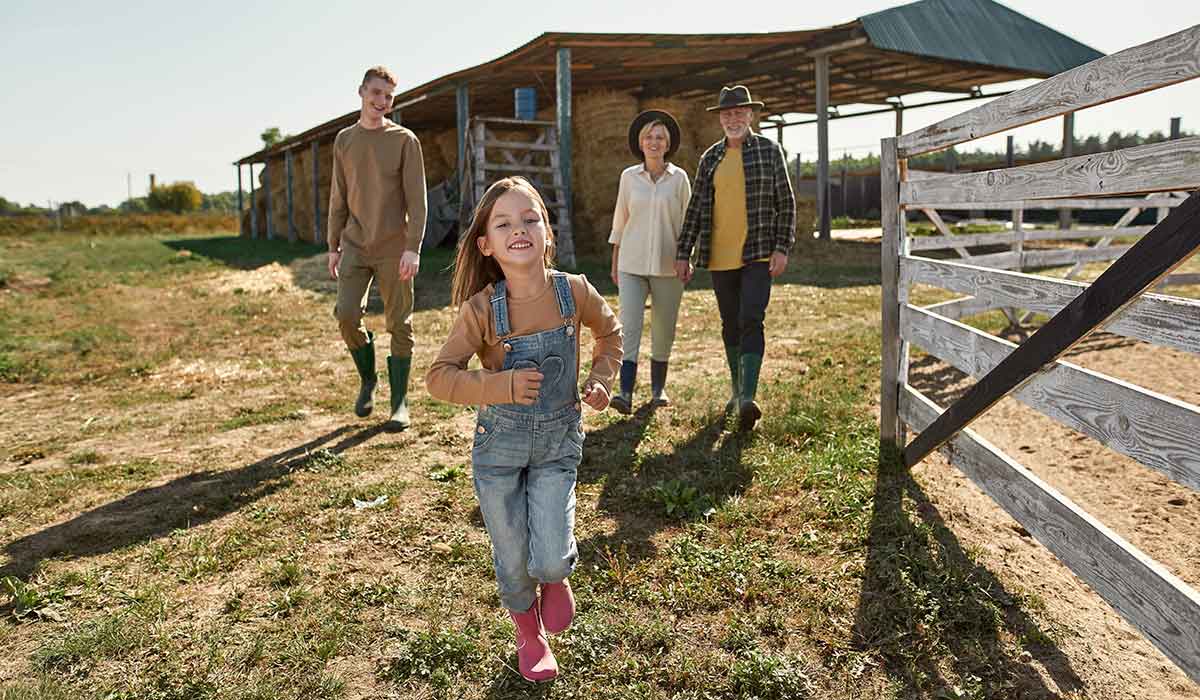
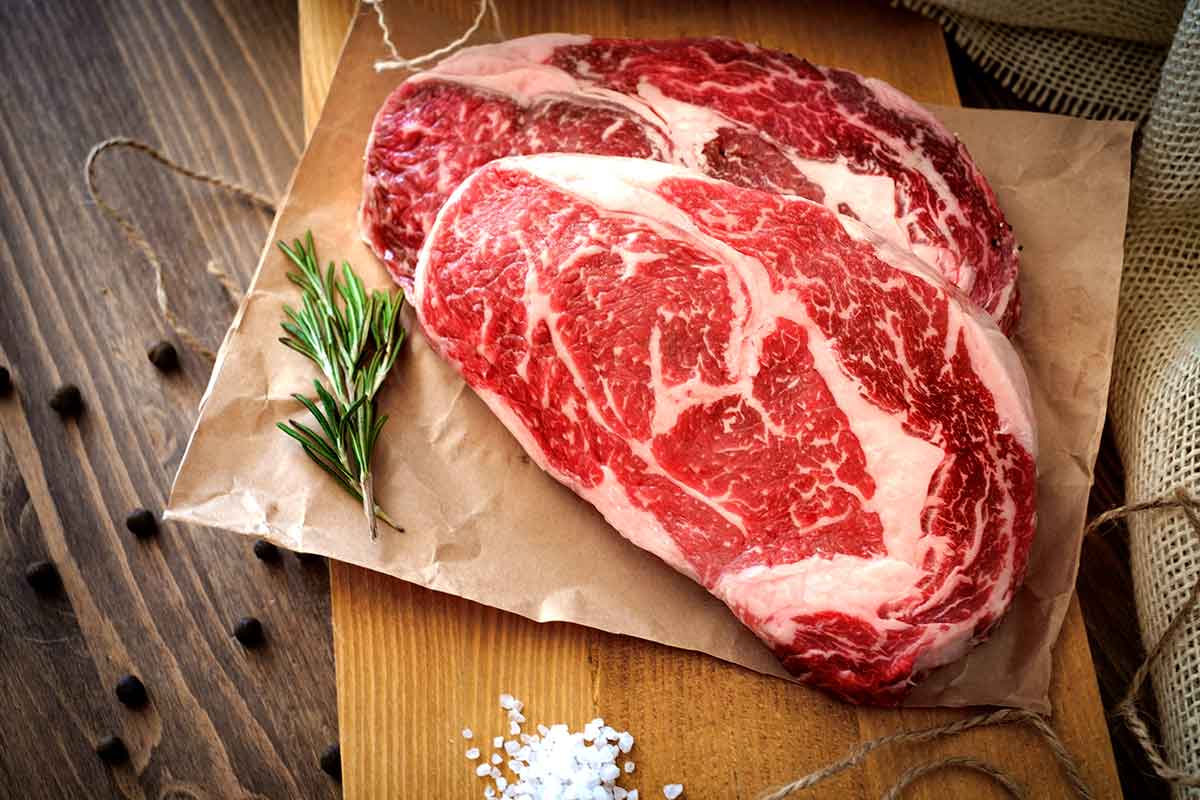
Grain-Fed Beef
Grain-fed beef is the most widely produced beef in the United States. Grain-fed cattle spend most of their lives grazing pasture before moving to a feedlot for approximately four to six months where they are fed a carefully balanced diet that usually includes grain. Feeding cattle a grain-based ration for a small period of time helps improve meat quality and provide a more tender and juicy product for consumers.
While cattle are in feedlots, owners and managers ensure they have a balanced diet; access to clean water; room to grow and roam; and overall, humane treatment. To help improve their productivity, grain-fed cattle may receive growth promotants that have been rigorously tested and proven safe.
Natural Beef and Naturally Raised
By government definition, most beef is natural. According to USDA’s Food Safety and Inspection Service (FSIS), “natural” may be used on a label for meat if it does not contain any artificial flavor or flavoring, coloring ingredient, chemical preservative or any other artificial or synthetic ingredient, and the product and its ingredients are not more than minimally processed. This definition only applies to how the meat was processed after the cattle were harvested and does not apply to how the animals were raised.
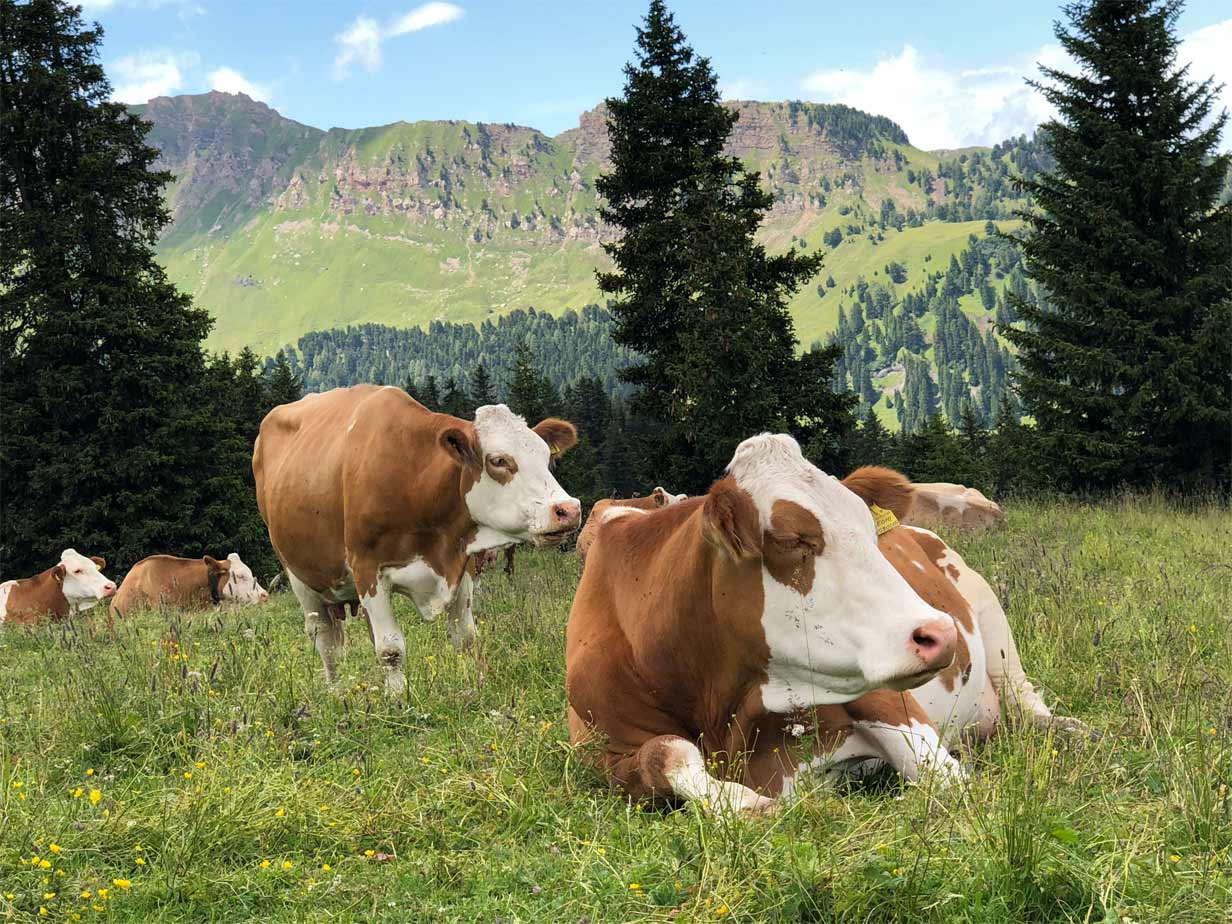
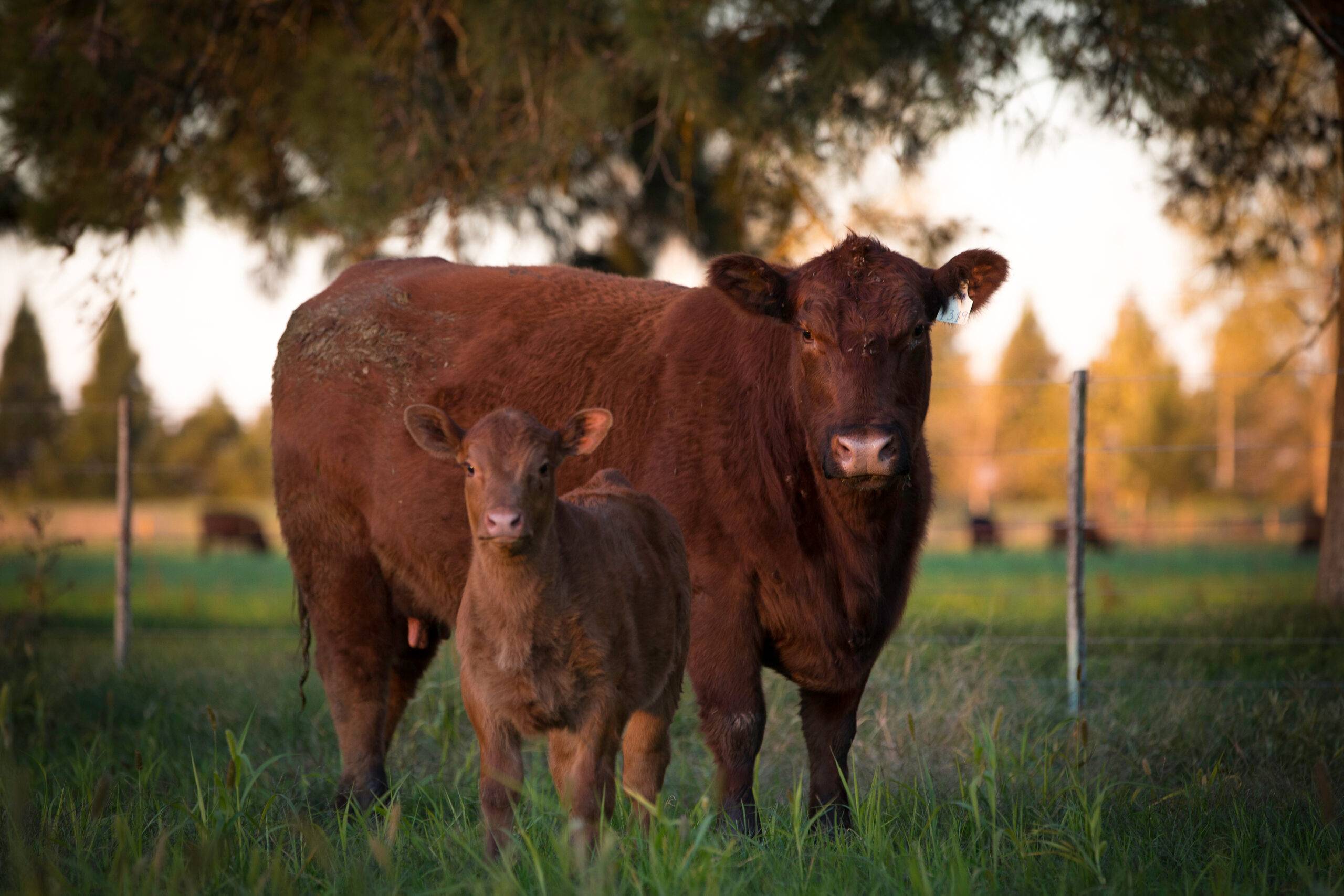
Grass (Forage) Fed or Grass-Finished
Similar to “naturally raised” beef, grass-finished beef refers to how the cattle were managed prior to harvest and specifically, to the type of diet the cattle consumed. While most cattle spend the majority of their lives in pastures eating grass before moving to a feedlot for grain-finishing, grass-finished beef cattle remain on a pasture and forage diet their entire lives.
Grass and forage should make up the animal’s diet for its entire lifetime, with the exception of milk consumed prior to weaning.
It is difficult to produce large quantities of grass-finished beef on a year-round basis due to seasonality. For this reason, grass-finished beef can be more expensive, and some grass-finished beef sold in the United States may be imported from countries with more temperate climates.
Grass-finished beef may have a slightly different fatty acid profile than grain-fed beef; however, the difference is not significant. Grass-finished beef can contain more conjugated lineoleic acid (CLA) than other kinds of beef, but research has not determined whether this results in a significant health benefit. Research also has shown that a 3.5-ounce serving of grass-finished beef offers 15 milligrams more omega-3 than other kinds of beef; however, beef is not a primary source of omega-3 fatty acids.
Certified Organic
Beef labeled as “certified organic” must be from cattle that meet USDA National Organic Program (NOP) livestock production requirements. Grain-fed beef, naturally raised or grass-finished beef may be eligible for USDA’s NOP certification if the additional requirements are met.
The Organic Foods Production Act, effective October 2002, sets the standards for all food labeled organic. For beef, this means:
- Cattle must be fed certified organic feed but may be given certain vitamin and minerals.
- Organically raised cattle may not be given growth promotants or receive antibiotics. Any animal that is treated with antibiotics to ensure its health must be removed from the NOP.
- Organically raised cattle must have access to pasture – they may be temporarily confined for specific reasons. However, most cattle in the United States, regardless of how they are raised, meet this criterion.
The U.S. beef industry is known for the tender, flavorful, grain-fed beef that it The U.S. beef industry has instituted a producer-initiated Beef Quality Assurance (BQA) program that is focused on production practices that ultimately impact product safety.
Implementation of these programs demonstrates to consumers, both domestically and internationally, that the U.S. beef industry is committed to produce the safest and most wholesome products possible.
Beef carcasses are classified into yield grades and quality grades which are determined by a USDA grader. Yield grades, a numerical score of 1 to 5, are an estimate of the percentage yield of boneless, closely trimmed retail cuts from the chuck, rib, loin and round primals.
A yield grade of 1 is a very lean (high yield) carcass, while a yield grade of 5 is a less lean (low yield) carcass. Quality grades are determined by the amount of marbling present in the ribeye at the 12th and 13th rib interface and indicators of the carcass maturity. The quality grades are Prime, Choice, Select, Standard, Commercial, Utility, Cutter and Canner. The quality grades most commonly sold in the international markets are Prime, Choice and Select. Also, marketed internationally is a classification “No Roll” or Ungraded, which refers to product that has not been graded.
Beef specifications must be communicated accurately between purchaser and supplier.
The items described in this manual are general guidelines to the industry but may vary from supplier to supplier. When ordering products, the buyer should clearly understand the production specifications offered by the U.S. supplier. U.S. packers are willing to assist international customers with their unique needs; specialty products may be ordered.
Packaging requirements must be agreed upon between the buyer and seller as part of the contract or purchase order. Beef products are available in boxes with plastic liner bags, wax-lined boxes, individually wrapped pieces or vacuum packaged pieces. There are benefits and costs associated with each type of packaging.
